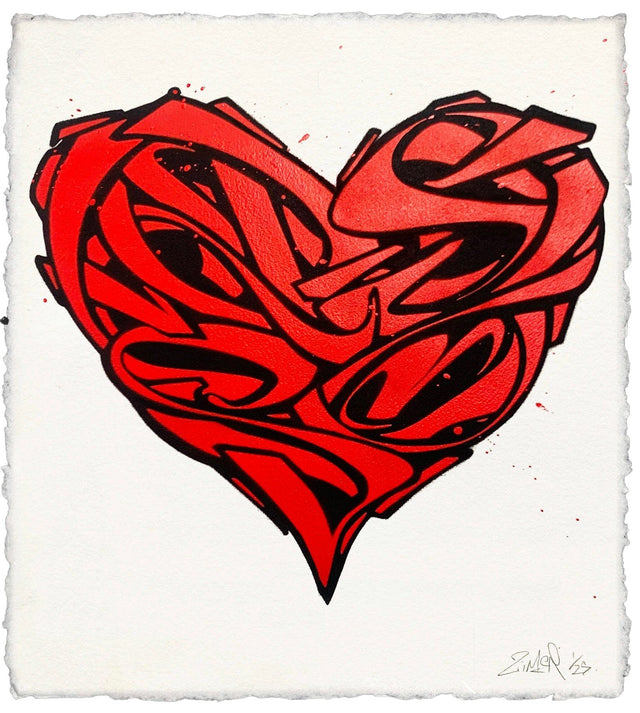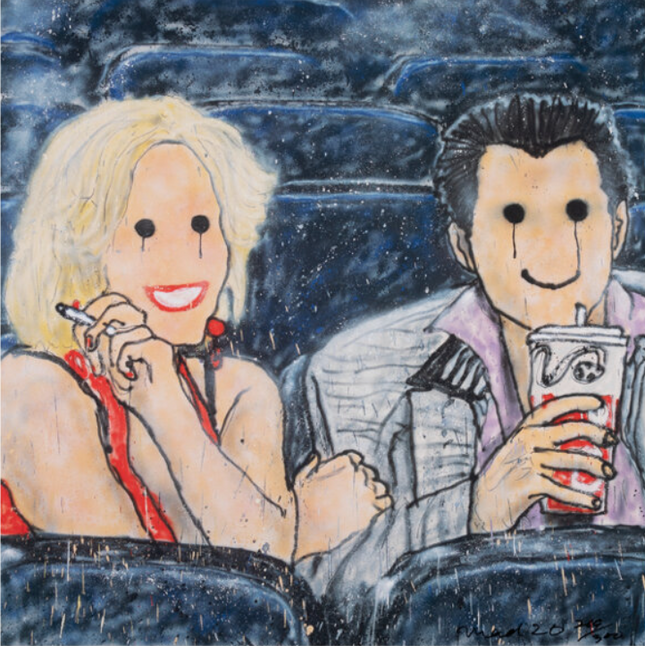Manifestations of Love in Street Pop Art and Graffiti Artwork
Graffiti street art has been a powerful medium for artists to express themselves, convey social messages, and reflect on various aspects of life, including love. Love, as a theme, is prevalent in graffiti street art as it resonates with people from all walks of life. This universal emotion is often depicted in creative and thought-provoking ways, using different styles and techniques. Some common representations of love in graffiti street art include Iconic symbols. The heart shape is a widely recognized symbol of love frequently used in graffiti. Artists might use this symbol alone or incorporate it into larger, more complex designs. Quotes and phrases: Graffiti artists often use text to convey love-related messages, such as famous quotes from literature, song lyrics, or original phrases. These messages can range from romantic and sentimental to thought-provoking and critical. Portraits and characters: Artists may create realistic or stylized portraits of couples, families, or individuals to showcase various aspects of love. These portraits can depict love between romantic partners, friends, or family members. Additionally, characters such as famous lovers from history or fiction can be featured. Abstract representations: Some graffiti artists prefer to use abstract shapes, colors, and patterns to symbolize love. This approach allows for a more open interpretation of the theme, inviting viewers to explore their feelings and love-related experiences. Social commentary: Graffiti can also address love-related issues, such as gender and sexuality, interracial relationships, or societal norms and expectations. By addressing these topics, artists can provoke thought and inspire change. Graffiti street art has the power to touch and engage people with its vibrant, bold, and often unexpected expressions of love. From simple symbols to intricate murals, the theme of love remains a compelling subject matter for street artists worldwide. Love, as old as humanity itself, finds a unique and vivid expression in street pop art and graffiti artwork. Often perceived as a concrete jungle devoid of sentiment, the urban landscape is transformed by artists who use the language of love to communicate, protest, express, and beautify. In these art forms, love is not confined to the personal; it expands into a universal theme, taking on various shapes and colors and becoming a message that resonates with a diverse audience. The portrayal of love in street pop art and graffiti often transcends the traditional symbols of hearts and Cupid's arrows, instead embodying a more inclusive and sometimes raw depiction of what it means to love and be loved. Artists within these movements have long utilized public spaces to explore and challenge societal notions of love, intimacy, and companionship. Love is a recurring motif from the scribbled declarations of affection on a back alley wall to the elaborate murals that adorn city buildings. This exploration of love within street art is not merely an aesthetic choice; it reflects the artists' desire to connect with the community, evoke emotion, and offer commentary on the human experience. The depictions of love in these art forms are as varied as the artists themselves, with some choosing to represent love's joy and beauty while others do not shy away from its complexities and challenges.
Cultural and Social Significance of Love in Urban Art
Love's cultural and social significance in urban art cannot be overstated. Street pop art and graffiti artwork uniquely engage passersby in a moment of reflection or a burst of joy. Love-themed art can act as a beacon of hope in an otherwise dreary commute or as a symbol of resistance in the face of social injustice. In some cases, love in street art serves to reclaim spaces marked by neglect or decay, injecting them with new life and meaning. Artists who incorporate love into their street work often do so to create a dialogue with the community. It is a dialogue about the power of love to cross boundaries of race, gender, and class. Through bold colors, intricate designs, and sometimes the simple act of writing someone's name, these artists celebrate love's inclusivity and capacity to unite. In an age where division can seem prevalent, love-themed street pop art and graffiti artwork are vibrant reminders of our shared humanity and the bonds that hold us together.
In conclusion, love in street pop art and graffiti artwork is a multi-dimensional theme that reflects the complexity of the emotion itself. Through the hands of urban artists, love is celebrated, questioned, and revered in a form accessible to all. It is a force that can transform a wall, a street, a neighborhood, and ultimately, the hearts and minds of those who encounter it. The persistence of love as a subject in street art is a testament to its enduring relevance and power to inspire, comfort, and connect us all.
Embracing Loves Vivid Heartbeats of Street Pop Art
The presence of love in street pop art and graffiti artwork is as ubiquitous as the very air that swirls around the bustling cities these art forms adorn. Love, in its myriad manifestations, has long been a subject explored by artists across the globe. The emotional resonance of love transcends the canvas, spilling onto the streets, where the public encounters heartfelt messages in the most unexpected of places. This exploration into the depiction of love through street art and graffiti offers a glimpse into the power of public expression and the universal language of the heart. Street pop art, known for its vivid depictions of culture and life, embraces the theme of love with both arms. This form of artistry, thriving in the veins of urban environments, serves as a public display of affection, where grand gestures and intimate whispers coalesce. Artists pour their visions of love onto concrete and brick, transforming the cold cityscape into a warm embrace. Through bold colors, sweeping murals, and evocative imagery, love takes on a life of its own, speaking to passersby and inviting them to pause and ponder the role love plays in their lives. The messages of love found in street pop art range from the romantic to the platonic, from the joyous to the bittersweet. They serve as a reminder that love is multifaceted, capable of evoking a spectrum of emotions and thoughts. These artworks often become landmarks, places where individuals might propose, or simply spaces where one can feel less alone amidst the urban sprawl.
Graffiti Artwork: An Indelible Mark of Affection
Graffiti artwork, with its roots steeped in the expression of identity and dissent, also serves as a fertile ground for expressions of love. Graffiti artists use the streets as an open journal where declarations of love are chronicled. These inscriptions, tags, and images become part of the collective memory of a neighborhood, a permanent whisper of affection that can endure long after the initial sentiment may have faded. The temporary nature of some graffiti, subject to the elements or the paint-overs of city cleanup crews, parallels the fleeting moments of love in our own lives. Yet, even when covered up or washed away, the sentiment that was once there leaves an indelible mark, much like a past love that shapes who we are. In this way, graffiti becomes a metaphor for the permanence and impermanence of love, a dance between visibility and memory. The stories of love in street art and graffiti are often personal to the artists themselves. These creators leave pieces of their own hearts on display, using pseudonyms and symbols to represent their experiences and emotions. Whether it is the sorrow of a love lost, the happiness of a love found, or the hope of a love that is yet to come, each piece becomes a chapter in an ongoing narrative. For instance, artists like Banksy have often incorporated images of love into their work, though typically shrouded in a layer of social commentary. The anonymity of such artists adds a layer of mystery to the love stories they depict, allowing observers to project their own meanings and experiences onto the art. The depictions of love in street pop art and graffiti artwork are as diverse as love itself. These visual love letters, written on the walls of cities around the world, provide a public testament to private feelings. They encourage us to reflect on our own experiences with love and remind us that, in the end, love is a universal language, understood by all, regardless of the medium through which it is expressed.




